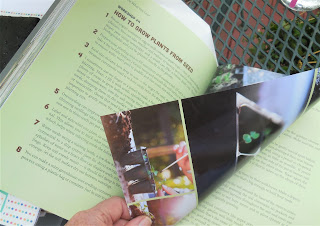There are herbs (of course there are herbs) to help you get through the
long, sticky days of August with your cool head intact.
1. Sage (Salvia officinalis):
Sage is a mint family member. That may sound surprising, but actually
most herbs are, in some way, connected to this very large plant family. Here’s
the crazy thing about sage: as a hot tea, it induces sweating. As a cold tea,
though, it eases sweating. Try both hot and cold and see what your body likes.
We make a rose iced tea with sage and most people were surprised we included it
until they enjoyed the effects.
Sage is also good for the nervous system when it’s been aggravated by
heat — you know, all those hot tempers that flare up in August? Other heat
conditions can arise, of course, aside from summer heat. Menopause is one good
example. Sage is really wonderful for this transition, easing the heat and
dryness in the body. Try a cool tea laced with honey (which, as a demulcent,
draws moisture to the body) to ease any discomfort.
2. Elder (Sambucus nigra,
Sambucus canadensis):
You may be familiar with the elderberry’s use as a cold/flu/cough
remedy, but the flowers are also used herbally, especially when trying to
reduce heat. Elder is a cooling, drying herb, especially when it’s the dried flowers
used in an infusion or tincture.
The reason elder is so good with colds, the flu, and heat in general
can be attributed to its diaphoretic effect, which means the herb allows fluid
to move easily in the body, opening pores and cleaning everything out. Elder
flower tisane or tincture made from dried flowers is especially effective if
you suffer from habitually dry, irritated, or flushed skin. Elder improves
circulation throughout the body, opening the lungs, blood vessels, capillaries,
kidneys, skin — anything that moves fluid along.
There are no dangers or contraindications associated with elder
flowers, so brew away. Elderflowers turn
into elderberries this time of year. Be careful
as overconsumption of elderberries can potentially cause digestive upset, but
this usually isn’t much of a danger if they are dried or cooked first. Never use
the bark internally, or any raw berries or leaves.
3. Yarrow (Achillea millefolium):
Yarrow is one of my absolute favorite herbs, perhaps because it's one
of the true traditional medicinal herbs of the New World.
Native Americans knew its worth and shared it
with us.
The plant has a long, well-documented
history. It grows almost everywhere, which makes it a truly local food. I just realized I have never
done an herb of the week just on Yarrow! (I
will fix that soon!)
Yarrow regulates the fluids in the body, cooling or heating as needed
by moving blood toward, or away, from the skin’s surface. This makes it a good
herb for my Rosacea which might contribute to it being a favorite of mine. I also love the bold yellow color and the
fact that dried it keeps that color and shape making using it in winter arrangements
fun and interesting.
To take yarrow, brew up a warm cup of tea to open the pores of the skin
and to release heat; a cold brew will stimulate digestion and the kidneys,
relieving fluid retention. You can also use yarrow topically on wounds and
bruises — another common summer occurrence.
NOTE: It’s best to avoid yarrow while pregnant. Also, it is possible to
have a yarrow allergy, so if you suffer from a ragweed allergy, start with
small doses and see how you feel. It's best to avoid this herb if you’re on
anticoagulants or suffer from bradycardia.
No matter how you choose to beat the heat this summer, herbs are a
fantastic addition to your summer wellness routine. Not a fan of iced tea? Brew
up and cool a sage tisane (tea) and mix it with some lemonade. Trust me: it’s
fantastic. Any of these herbs can be seamlessly combined in any number of
summer drinks, smoothies, or sodas. And remember, when you’re using herbs as
remedies, it's best to let them steep 5-10 minutes and use 2-3 tsp per 8 ounces
of water (although you can adjust either of these recommendations to your
personal taste).
Enjoy the rest of your summer with enjoyment and a cool head.

















